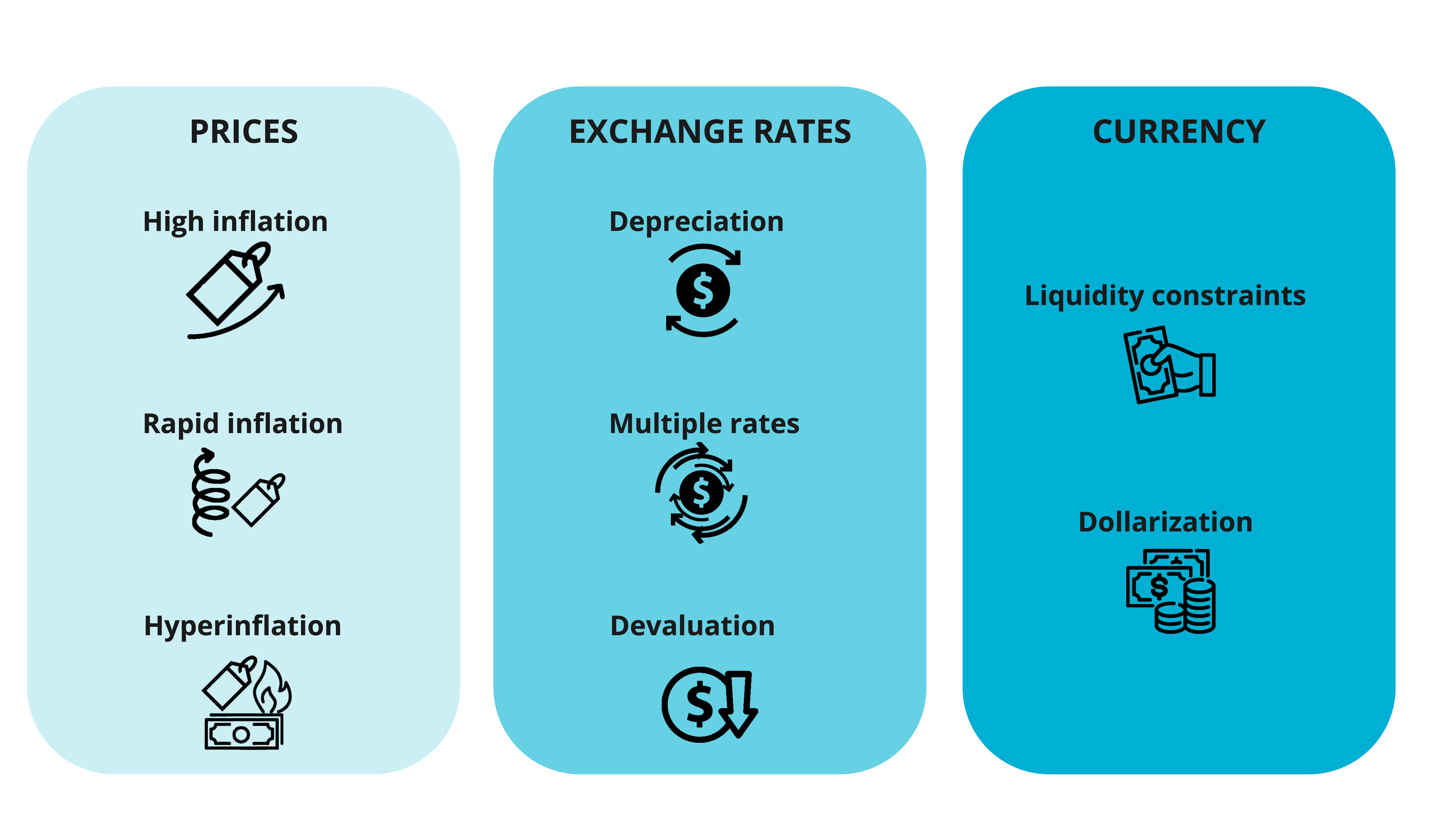Foundations
Using the right words for the right situation
As NRC staff, we have long-standing experience and knowledge of humanitarian challenges. But we are not meant to be economists! Yet, different economic problems will affect in different ways the people we work with and our own capacity to serve them. We just need to be able to understand that!
Get familiar with the foundations to ensure we're all speaking the same language and talking about the same things
What are we talking about?
We have decided to call this toolbox NRC's Economic Crisis (the X in NEXT) Toolkit. But we use the term “economic crisis” here loosely, to point at the complexity and variety of sources of macroeconomic instability that affect the contexts in which we work such that we have to adapt what we do (our programming) and how we do it (our support structures).
The purpose of this toolkit is not to make humanitarians into economists! There are actually subtle and technical, yet important nuances between what qualifies as an economic crisis, a monetary crisis, a currency crisis, an exchange crisis, a financial crisis, or a banking crisis, etc. But overall these phenomena are to some extent intricately related. So for the sake of simplicity, we will use as an entry point everything that in lay language is sometimes described as an economic problem or an economic crisis.
Why do we care?
One of the objectives of the toolkit is to provide staff with simple tools and guidelines to discriminate between these different situations and problems, insofar as they can affect both us and the participants in our programs in very different - sometimes radically opposite - ways.
A lot of the difficulties that humanitarian actors have to adapt to these types of complex economic problems comes from the fact that we don’t label them properly and / or we mix them up and mix them together. This leads us to inefficiencies and talking past each other in coordination structures and within organizations, missing opportunities to respond in a relevant, appropriate and timely manner to the needs that arise.
Our belief is that having a minimal capacity for economic analysis (in this instance, the ability to distinguish between various sources of macroeconomic instability) will help humanitarians to:
- identify the macroeconomic factors influencing their operational environment
- apply a critical lens to recommendations and best practices to choose which ones are most helpful to address the implications.
- recognize the signs and anticipating future problems and risks and take the appropriate anticipatory actions and preparedness measures.
- frame discussions about these problems, not only internally but externally, and in advocacy through coordination structures and other forums.
Let's start with a simple typology of economic problems!
There are different types of (macro)economic problems. Some affect prices, others affect exchange rates or currency.
The most common problems that humanitarians face are:
- Problems related to prices such as high and / or rapid inflation, hyperinflation, etc.
- Problems related to exchange rates such as depreciation, devaluation, multiple or fixed rates, volatility, etc.
- Problems related to currency such as dollarization, liquidity shortages etc.
While each context has its unique features, many combinations of each of these phenomena have already happened in humanitarian contexts. Useful lessons learned and best practices can be derived from these experiences for our work. But in order to know where to look, you need to be able first to name the right problem you are having!


Different types of problems often happen at the same time. But it is important to be able to distinguish between them!
Different problems have different causes & mechanisms, as well as different effects & solutions! Unpacking these complex phenomena also helps in discussions with other actors.
Several guidance on humanitarian programming in depreciation & high inflation contexts have been issued in recent years. So far, they have largely focused on cash transfers. In this toolkit, we adopt a bit of a broader perspective. The objective is NOT to go over existing documents and resources that document best practices, but rather to build the capacity to use them. We won't either try to do previsions or scenario building about what may or may not happen in the future, but rather focus on providing you key tools to understand what is happening or could happen, to be able to think about it critically and be smart in your decisions.
For each of these eight economic problem, we will explore:
➀ its definition, causes, mechanisms...
➁ what indicators, triggers to monitor...
➂ its impact on programs, on support structures...
➃ how we prepare for it, how we mitigate it...


